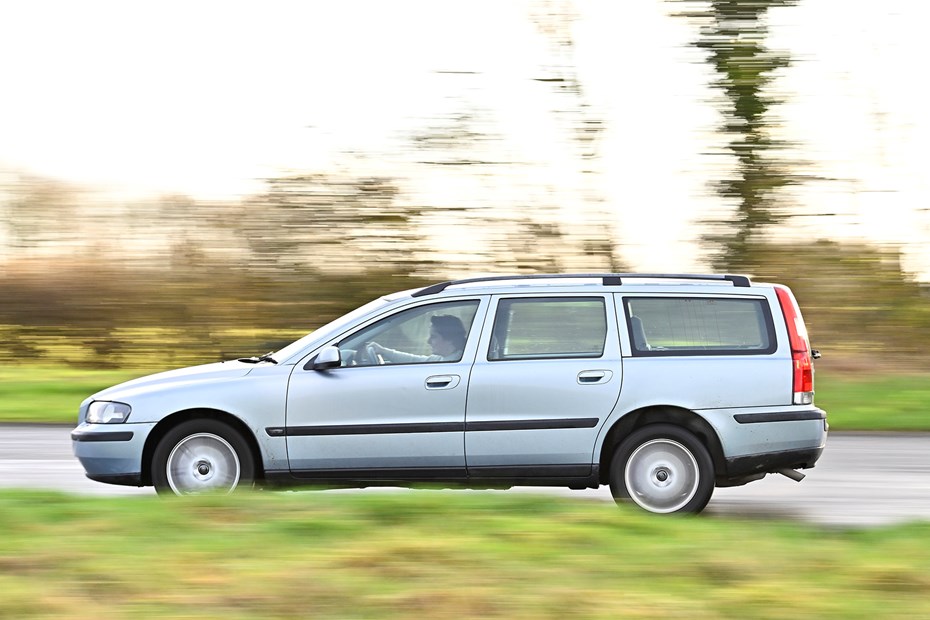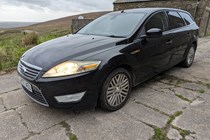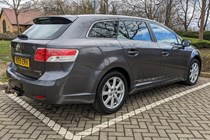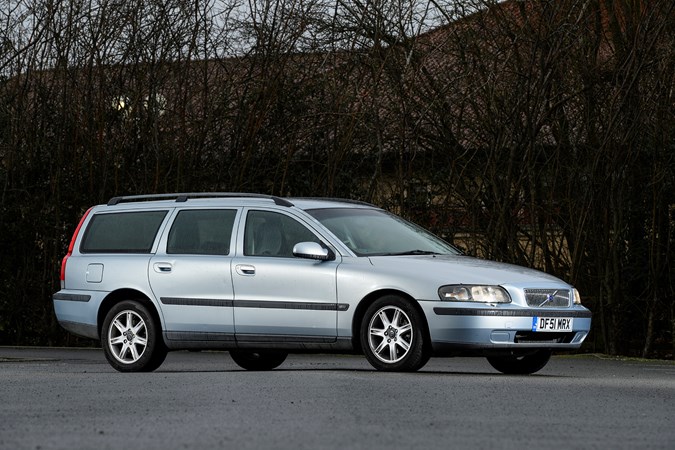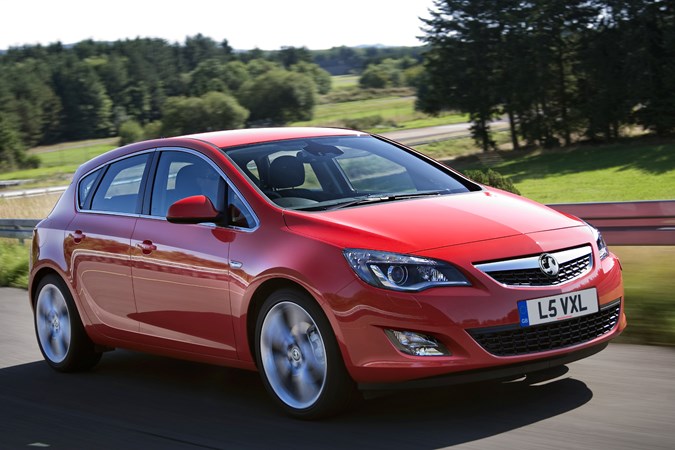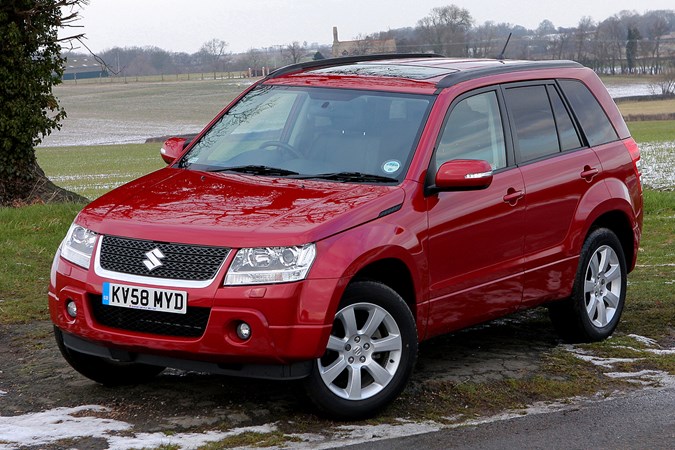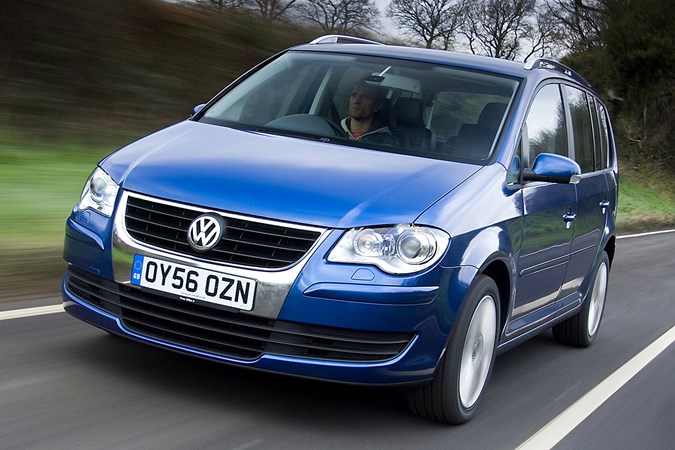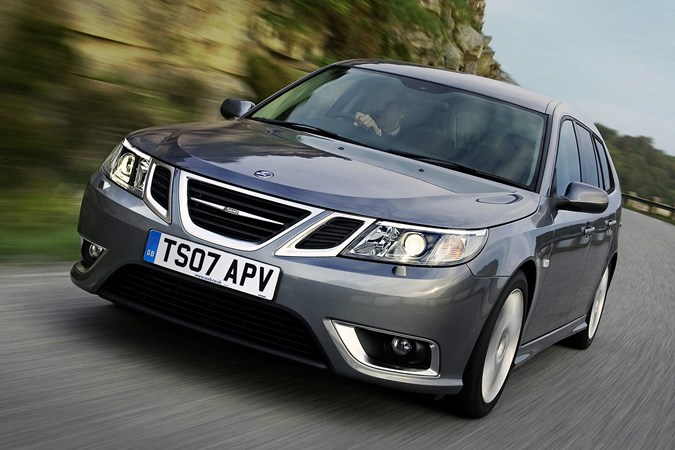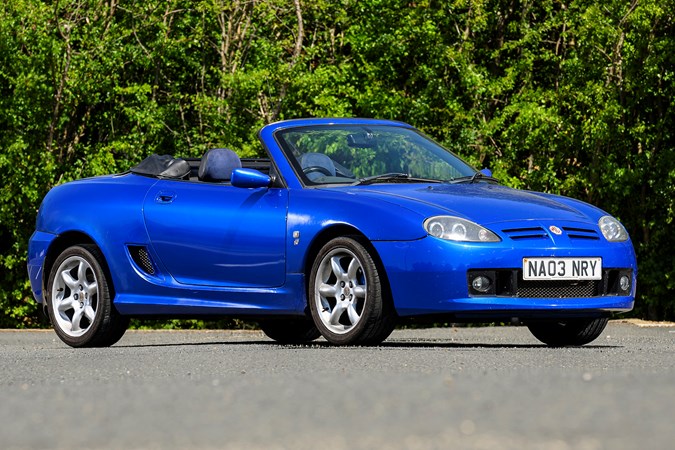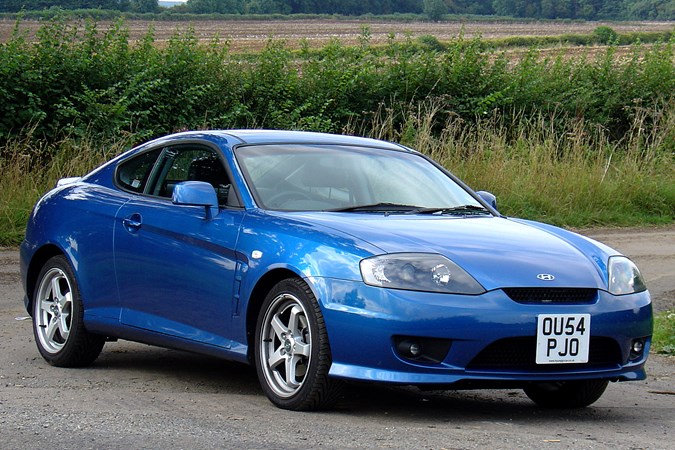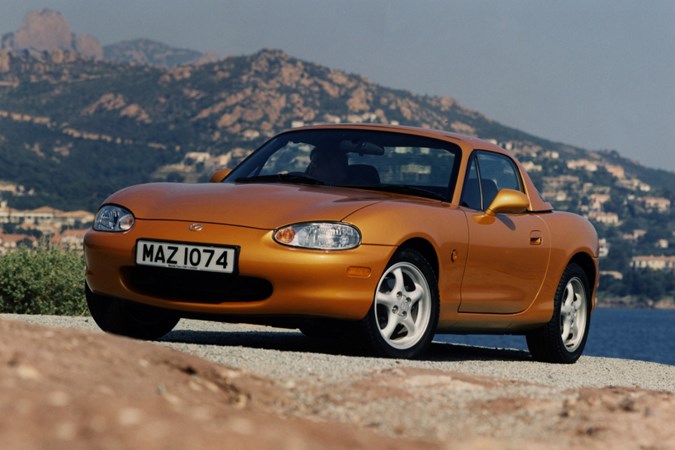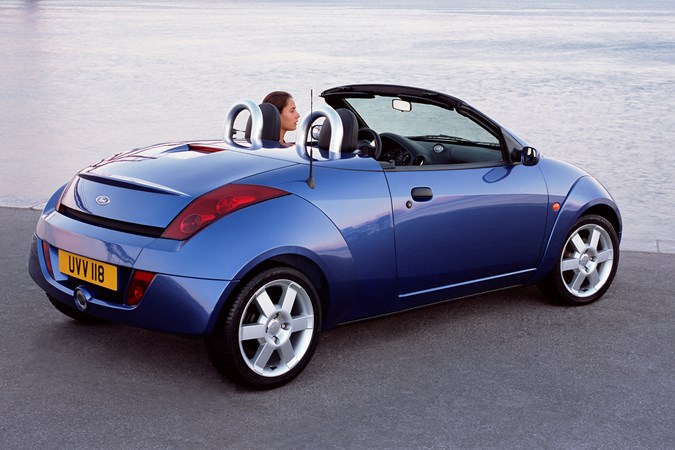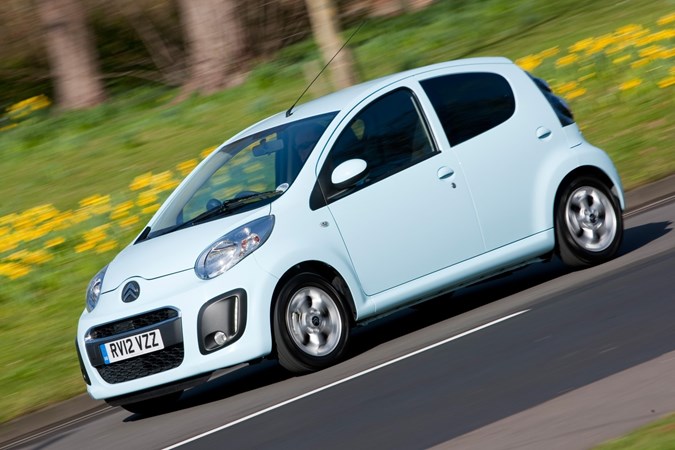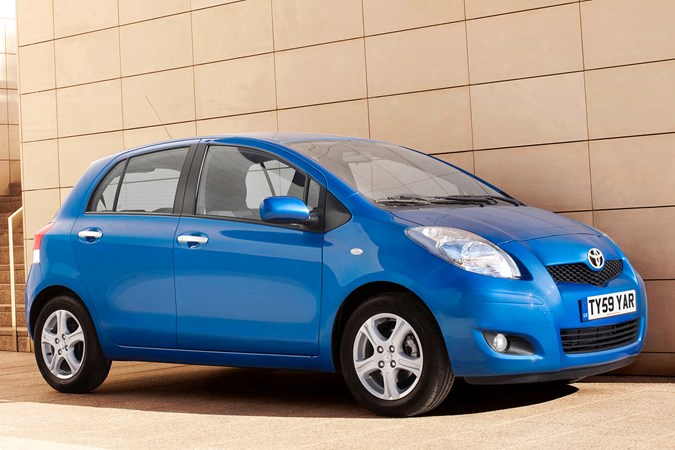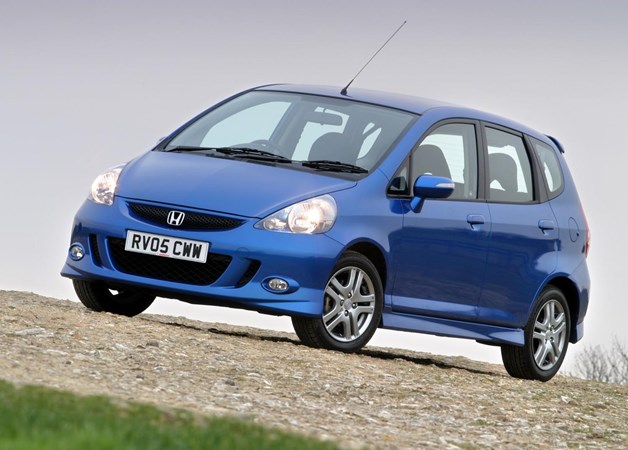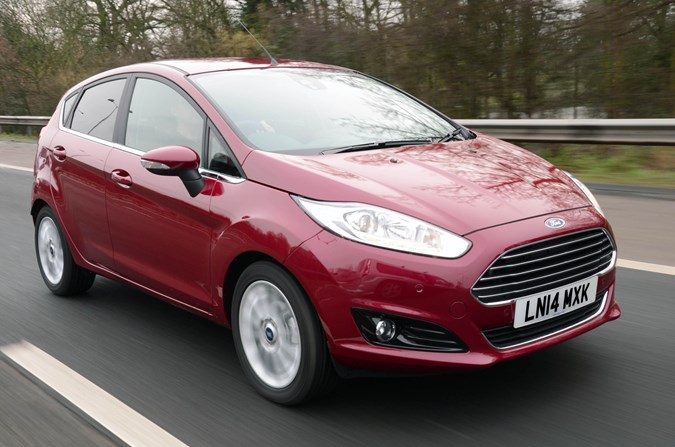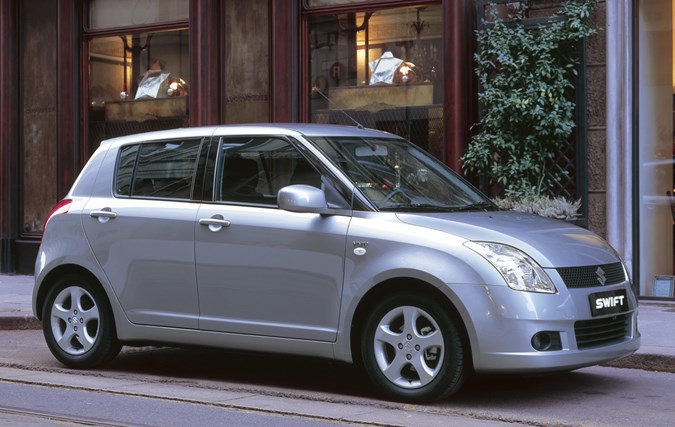A big weekend away, a mid-range laptop or a three-piece suite – a budget of under £1,500 doesn’t buy you what it used to. But in the world of used cars, it can still stretch to something that’s practical, enjoyable, and even a little bit glamorous if you know where to look.
Yes, there’s more scrap and ropey projects than there used to be at this price point, and the best examples are often snapped up within hours. But take your time, be picky, and £1,500 can still land you a reliable daily driver or a weekend toy that makes you smile.
To help you avoid the shed-and-a-prayer brigade, we’ve rounded up our favourite cars you can realistically buy for £1,500. They cover the full spectrum: sensible commuters, big load-luggers, sporting coupes, city runabouts and top-down weekenders.
Best used cars under £1,500
Oh, so sensible choices…
The archetypal big Volvo estate
You’ll find both petrol and diesel models in budget. The D5 diesel is a mile-munching legend, capable of clocking up intergalactic mileages if serviced properly, while the 2.4-litre petrols are smooth, quiet and much simpler to maintain if you’re doing lower annual mileage. Automatics are common and can be very reliable if they’ve had fluid changes, but a well-looked-after manual can be just as satisfying.
Even at £1,500 you can expect a generous spec, with leather seats, climate control and cruise control on many examples. Don’t get too hung up on finding a high trim level, though – condition and maintenance history matter far more than equipment. A well-cared-for base-model V70 will be a far better long-term buy than a top-spec example with patchy servicing and looming repairs.
Problems to watch out for: Auto gearbox servicing is vital, front suspension arms wear, ABS and electrics can be glitchy.
Read the Volvo V70 review and buying guide
Pros
- Huge load space
- Superb seats
- Will do big miles
Cons
- Heavy on fuel
- Big car in town
Solid, cheap-to-fix all-rounder
The 1.6-litre petrol is the sweet spot for everyday use. It’s simple, reasonably frugal and avoids the diesel’s DPF and EGR valve worries, while still offering enough power for relaxed motorway cruising. If you prefer a little extra punch, the 1.4 Turbo is a surprisingly capable and dependable engine, offering more mid-range pull without a big penalty at the pumps. Diesel options such as the 1.7 CDTi and later 2.0-litre units are good long-distance cruisers, but at this budget you’ll need to be sure the emissions systems are healthy before committing.
Problems to watch out for: Rust isn’t common, but suspension bushes, coil springs and electronics can play up. Avoid neglected diesels.
Read the Vauxhall Astra Mk6 review and buying guide
Pros
- Roomy cabin
- Cheap parts
- Plenty of choice
Cons
- Bland to drive
- Interior plastics feel cheap
Compact SUV with real off-road chops
For £1,500 you’ll likely be looking at a higher-mileage petrol model, which is generally the safer bet than the smokier, clattery diesels that can suffer from expensive injection and turbo issues if neglected. The 1.6- and 2.0-litre petrols are straightforward, reasonably reliable and not too bad on fuel for a proper 4x4. Manuals are common, but you might find the occasional automatic, which is fine for gentle use but less ideal if you want to do serious off-roading.
Problems to watch out for: Rust on the underside, tired suspension, and temperamental electrics on higher-mileage examples.
Read the Suzuki Grand Vitara review for more information
Pros
- Proper 4x4 hardware
- Good visibility
- Robust image
Cons
- Thirsty petrols
- Not the most refined
Big cars for not-so big money…
Executive feel for pennies
The 2.0-litre petrol is the pick for most buyers – smooth, dependable and free from the diesel’s more complex emissions hardware. That said, the diesels are tempting for their economy, especially the 2.0 TDCi, which is capable of impressive motorway mpg if it’s been looked after. The key is maintenance: neglected diesels can suffer from injector issues, turbo failure and costly DPF blockages, so a thick folder of service history is essential. Manuals are common and generally robust, while automatics can be fine if they’ve had regular fluid changes.
At this price you’ll mostly find higher-mileage examples, but the Mondeo hides age well thanks to its solid build and comfortable, well-shaped seats. Even with 150,000 miles under its belt, a looked-after car will still feel planted on the road and inspire confidence in bad weather. Focus on overall condition, evidence of recent suspension work, and a smooth, rattle-free drive. A good Mondeo will soak up the miles without complaint – and feel far more expensive than it is.
Problems to watch out for: Rust around rear subframe mounts, diesel injector issues, dual-mass flywheel clutch isn't strong, and worn suspension bushes.
Read the Ford Mondeo Mk4 review and buying guide
Pros
- Spacious interior
- Comfortable ride
- Fun handling
Cons
- Higher road tax on bigger engines
- Some diesel woes
Seven-seat practicality on the cheap
At £1,500 you’ll mostly be looking at earlier, higher-mileage diesel models. The 1.9 TDI is the pick for reliability, capable of racking up serious mileage with regular servicing, and its simpler emissions setup makes it less trouble than newer diesel engines. The 2.0 TDI is more powerful but has a patchier record for long-term durability. Whichever engine you choose, avoid the DSG automatic gearbox unless there’s solid proof of regular fluid changes – a neglected one can be an expensive headache. A manual gearbox paired with the 1.9 TDI makes for a dependable, economical workhorse that should serve you well for years.
Problems to watch out for: EGR valve and turbo issues on diesels, and electrical gremlins in the sliding rear windows and central locking.
Read the Volkswagen Touran review for more information
Pros
- Versatile seating
- Good build quality
- Cheap family workhorse
Cons
- Electrical issues can be annoying
- Dull to drive
Fast, roomy and different
At £1,500 you’ll mostly come across lower-powered 1.8t or 2.0t models, which still offer decent performance and a similar driving experience, just with a little less urgency. A genuine Aero in this price bracket will likely be high-mileage, need some cosmetic TLC or come as a project, but they are out there if you’re patient. Look for a thick history file and evidence of regular oil changes – Saab’s turbo engines respond well to careful maintenance and can last well over 150,000 miles if looked after.
Problems to watch out for: Coil pack failures, limp mode woes, worn suspension bushes, and clogged breathers leading to oil sludging.
Read the Saab 9-3 Sportwagon review for more information
Pros
- Rapid performance
- Comfortable cabin
- Stands out from the crowd
Cons
- Expensive to run properly
- Parts can be pricey
Unfashionable but bulletproof
Diesels are tempting for their economy but should be approached with caution, as they’re known for costly head gasket issues if neglected. At this price point, a well-maintained petrol will usually be the more reliable long-term choice and still return reasonable mpg. Running costs are low, parts availability is good, and they tend to sail through MoTs with minimal fuss. The Avensis may not win any style awards or turn heads, but it will quietly get on with the job for years – and sometimes, that’s exactly what you need.
Problems to watch out for: Interior wear, suspension knocks, and corrosion on exhaust heat shields.
Read the Toyota Avensis Tourer review for more information
Pros
- Reliable
- Comfortable ride
- Low running costs
Cons
- Dull styling
- Not engaging to drive
Sporting choices for your money…
Cheap mid-engined thrills
One of the TF’s best-known weak points is its K-Series engine’s head gasket. The problem is well documented, but it’s not a deal-breaker if the repair has been carried out properly, ideally with an uprated gasket and new oil rail. In fact, a documented head gasket replacement is often a good sign, as it means the work is done and you can enjoy the car without that worry hanging over you. Cooling system health is vital – check for leaks, overheating and signs of neglected coolant changes. Suspension bushes and ball joints can also wear, so a test drive that includes a mix of road surfaces is essential.
The cabin is snug but comfortable enough for two, and the boot space – split between the front and rear – is fine for weekend bags. Parts supply is strong thanks to specialist support, and running costs are modest if you keep on top of maintenance. Treat the TF well, and it’s a sports car you can genuinely use regularly without breaking the bank. Just buy with your head as well as your heart, and you’ll get a lot of smiles per mile.
Problems to watch out for: Head gasket failure, corroded subframes, tired suspension joints.
Read the MG TF review and buying guide
Pros
- Mid-engined handling
- Affordable fun
- Good parts support
Cons
- Rust-prone
- Tight cabin
Style without the price tag
Reliability is generally strong, and running costs are modest compared with more complex coupes from the same era. Rust can take hold on the sills and wheelarches, so a close inspection is essential, and higher-mileage examples may have tired clutches or worn suspension components. Find a well-cared-for example and you’ll have a distinctive, comfortable and easy-to-live-with coupe that offers plenty of style for very little cash.
Problems to watch out for: Rust on sills and wheelarches, worn clutches on high-mileage cars.
Read the Hyundai Coupe review for more information
Pros
- Eye-catching shape
- Cheap to run
- Comfortable ride
Cons
- Not that quick
- Some cheap interior plastics
The affordable classic roadster
The biggest enemy of the NB is rust, particularly on the sills, rear wheelarches and chassis rails, so any potential purchase needs a thorough inspection. Mechanical parts are robust and relatively cheap, and the engines will happily clock up big mileages if serviced regularly. Look for signs of worn suspension bushes and leaky roofs, but don’t be put off by higher mileages if the car’s clearly been looked after. A solid MX-5 is one of the most rewarding cars you can buy for this sort of money, and it’s backed by a huge enthusiast community for advice and spares.
Problems to watch out for: Sill and wheelarch rust, leaky hoods, worn suspension bushes.
Read the Mazda MX-5 (NA/NB) review for more information
Pros
- Brilliant handling
- Simple mechanics
- Strong owner community
Cons
- Rust, rust and more rust
- Tight cabin
Affordable, fun and roof-down ready
Rust is the StreetKa’s main killer, particularly around the sills, wheelarches and floorpan, so a careful inspection underneath is essential before buying. Mechanically, they’re simple and inexpensive to maintain, sharing many parts with the standard Ka, which means repairs are easy on the wallet. Find a solid example and you’ve got yourself a cheap, low-maintenance convertible that’s perfect for summer fun without committing to year-round sports car ownership.
Problems to watch out for: Sills and floorpan rust, tired suspension.
Read the Ford StreetKa review for more information
Pros
- Cheerful looks
- Easy to drive
- Cheap parts
Cons
- Rust-prone
- Not quick
City cars – cheap and very cheerful
Three badges, one great city car
£1,500 is enough to buy a tidy, early example of any of the trio, and if you’re not fussed about the badge, the Citroen tends to be the cheapest. The 1.0-litre three-cylinder petrol engine is the one you’ll find in most cars (don't bother with the short-lived diesel) – it’s simple, economical and surprisingly eager in town, though you’ll need to work it hard on the motorway. Interior space is good for the footprint, with enough room for four adults on short journeys, and the boot will take a weekly shop if you pack carefully.
These cars are mechanically robust, but you should still check for signs of abuse, as many have been first cars for new drivers. Leaky door seals, worn clutches and tired suspension are common on higher-mileage examples, and exhaust systems can rust through if the car’s only been used for short trips. Stick to one with a full service history and no signs of water ingress, and you’ll have a cheap-to-run city car that’s as easy to own as it is to drive.
Problems to watch out for: Leaky door seals, clutch wear, rusty exhaust hangers.
Read the Citroen C1 review and buying guide
Pros
- Cheap to insure
- Easy to park
- Reliable engines
Cons
- Noisy on motorways
- Basic interiors
Tough and easy to park
Build quality is excellent, and many Mk2 Yaris models will still feel tight and rattle-free even with six-figure mileages. Running costs are low, with affordable insurance, strong fuel economy and inexpensive parts. Common issues are few, but it’s worth checking the clutch for wear, listening for suspension knocks, and making sure the battery is healthy, especially if the car’s been used mainly for short trips. A well-kept Yaris is about as close as you’ll get to fit-and-forget motoring at this price point.
Problems to watch out for: Clutch wear, suspension knocks, tired batteries.
Read the Toyota Yaris Mk2 review for more information
Pros
- Reliable
- Roomy for size
- Low running costs
Cons
- Not exciting
- Some road noise
The Tardis supermini
Running costs are low, with excellent fuel economy, inexpensive servicing and strong Honda build quality meaning many Jazz models soldier on well past 150,000 miles with minimal trouble. Manuals are the safest bet at this price, as the CVT automatic can suffer from judder if its fluid hasn’t been changed regularly. Rust can start to creep in on the rear wheelarches, and interior plastics can look tired if the car’s been used as a workhorse, but a well-kept Jazz offers near-bulletproof dependability and everyday versatility for very little money.
Problems to watch out for: CVT transmission issues (stick to manuals if possible), rusty rear wheelarches.
Read the Honda Jazz review for more information
Pros
- Huge interior space
- Excellent economy
- Reliable
Cons
- CVT can be fragile
- Firm ride
The safe choice
Cabin space is decent for the class, with a driving position that suits most people and a boot big enough for day-to-day needs. Common issues to check include clutch wear, tired suspension components and rust starting to appear on older cars, especially around the wheelarches and sills. The good news is that parts are cheap and widely available, and repairs are straightforward for most garages. Find one with a solid MOT history and you’ll have a small car that’s cheap to own and a genuine pleasure to drive.
Problems to watch out for: Clutch and gearbox wear, high-mileage examples don't wear their miles too well.
Read the Ford Fiesta Mk7 review and buying guide
Pros
- Fun handling
- Easy to find parts
- Cheap to insure
Cons
- Rust in older ones
- Tight rear space
Fun small hatch on a budget
Running costs are low, with good fuel economy, reasonable insurance premiums and affordable servicing. The main things to watch for are rust starting on the sills and wheelarches, worn suspension bushes and the occasional tired clutch on higher-mileage cars. Parts are easy to source, and the Swift’s mechanical simplicity means repairs are generally inexpensive. A well-cared-for Swift delivers a lot of personality for very little money, making it a great choice if you want a small car that’s more fun than the average runabout.
Problems to watch out for: Rusty front subframe, worn suspension bushes.
Read the Suzuki Swift review for more information
Pros
- Fun to drive
- Reliable
- Cheap to run
Cons
- Small boot
- Road noise
Is it worth buying a £1,500 car from a dealer?
You can still find bargains from licensed, professional traders if you’re prepared to act quickly. Most independent dealers don’t want low-value stock hanging around on their forecourt, but they will often have cheap part-exchanges they’re happy to sell on if there’s still a reasonable amount of MOT remaining. These cars are usually offered for a short period at a sensible price to clear space, rather than being prepped for full retail sale.
They are unlikely to put a truly bad car up for sale in this way – it’s not worth risking their reputation for a small profit. Anything that’s obviously rough, has major faults or needs expensive work will usually be sent straight to auction, or passed down the chain to amateur traders and the kind of fake private sellers you’ll see on online marketplaces. Buying from a dealer gives you the benefit of consumer rights protection, even at this budget end of the market.
If you’re polite, decisive and make life easy for them, you’ll stand out as the kind of customer they’re happy to deal with again. Build a good relationship and you’re more likely to get a call the next time they take in a low-value but well-looked-after part-exchange. Sometimes the best buys never even make it onto the forecourt – they’re sold to regulars before the general public gets a look in.
Parkers top buying tips
As with all used purchases, do remember to get a car history check. It might just save you from an unpleasant surprise later down the line. Also, don’t forget you can use our valuation tool to get an idea of how much you should be paying for a car. You can also check our reviews section for more information about the cars you are interested in.
Video: We put out money where out mouth is

FAQs: What to look out for at £1,500
-
Should I buy from a backstreet dealer?
Not all small independent garages are ‘backstreet’ in the bad sense of the word – some have long-standing reputations for looking after local customers and turning over decent, honest stock. The risk comes from sellers with no permanent premises, vague paperwork and little interest in your consumer rights. At £1,500, you’re not going to get perfection from any seller, but a reputable dealer will usually be open about a car’s condition and give you a chance to check it over properly. Avoid anyone who refuses an inspection, won’t show you the V5C logbook, or can’t tell you anything about the MoT history.
-
Is it worth buying a Cat S or Cat N car?
A Category S (structural) or Category N (non-structural) insurance write-off can be a smart buy if you go in with your eyes open. These cars have been damaged and repaired, sometimes to an excellent standard, sometimes not. The main appeal is price – you’ll often save hundreds over a non-recorded car – but you need to be confident the work has been done properly. Always check that the V5C is in the seller’s name, the repairs are documented, and that the car drives straight without unusual noises or uneven tyre wear. For many older cars, a Cat N marker might simply mean a scraped door or bumper, making it a non-issue for a budget runabout.
-
How can I find cheap cars before they hit the market?
The best bargains often sell before they’re ever advertised. Let friends, family, and local garages know you’re in the market for a £1,500 car – you’d be surprised how often someone is about to trade in a perfectly usable vehicle for very little. Keep an eye on noticeboards in supermarkets, workplaces, and community centres, as private sellers sometimes prefer a quick local sale over dealing with online timewasters. If you build a relationship with a local dealer, they may give you a heads-up when they take in a low-value part-exchange that suits your needs, allowing you to buy before it’s offered to the wider public.
Just so you know, we may receive a commission or other compensation from the links on this website - read why you should trust us.


